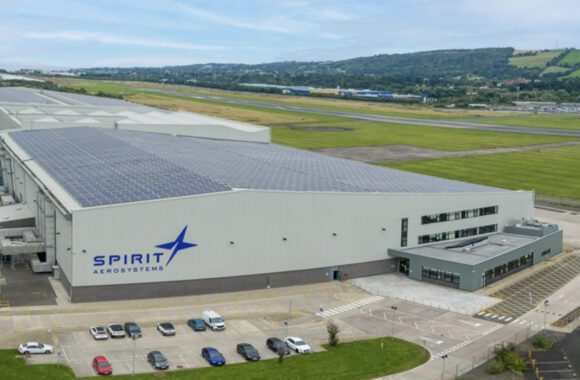Last fall, NASA released some photographs of its synthetic Schlieren photography that captured the sonic boom of a supersonic jet in flight. Recently, the government decided to classify the high resolution photographs from that release, although low resolution images, such as the ones shown below, can still be found on the internet, for example, here, which includes a short film clip (which has been removed from some other sites recently). We’ve posted several of the still images below that illustrate the shock waves.
The following image shows a supersonic shock wave quite clearly:
Another image illustrates how clearly the aircraft can be photographed using advanced digital photography using the sun as a light source.
We speculate that the rationale for making this technology classified may be to make (if such photography could be implemented on a widespread basis) stealth aircraft and drones potentially identified while in flight by an enemy and targeted and destroyed, or provide warning to move to more secure locations prior to overflight. This is difficult to accomplish against stealth vehicles today.
The question is how advanced such technology could become, and how quickly that could occur. Schlieren photography has been around since the 1860s (yes, about 150 years) and has been commonly used in wind tunnels to detect changes in refraction and therefore shock-wave patterns from a background light source. It is widespread. NASA has upped the game, using telescopes and digital photography, and using the sun as a background light source. Today, we’ve made significant strides in digital photography and image processing, and can “synthetically” create Schlieren images, as NASA has done with GASPS (Ground to Air Schlieren Photography System) that developed these images.
Of course, the timing of the aiming points and photography needed to be very precise, and lots of computer power applied to obtain the results that were shown above. But digital camera technology continues to improve, as shown in this link, and computing power continues on its exponential development curve. Marrying these two could result in a new detection capability – focusing on disturbances in airflow rather than radar that would enable the detection of stealthy aircraft and render those multi-billion dollar investments vulnerable.
There is no way to move an object through air without creating a disturbance in airflow. If a system like this could detect movements using real-time image processing from advanced digital photography over a widespread area, a substitute for radar detection could be at hand, all stemming from a technology originally developed by the German physicist August Toepler way back in 1864.
Views: 10






Answer. No.
One can immediately realize the futility of such an approach with a simple thought experiment. Diagram for oneself what kind of a ground array would be necessary to capture only say, 100km of a single ‘boundary’ line to be monitored for intruders crossing it for just one point in time in one solar day. Now widen that line to create a 100km x 100km area, so that one may acquire a ‘track’. Multiply the area a hundred-fold or more to acquire a track long enough for a nearby weapon system to be tasked to intercept (a thousand-fold or more if an intercept system is not nearby). Now make your system sophisticated enough to work at any time during the day. Calculate the cost of such a system. Now one may bring in operational factors, that will confound one’s system even if it is working perfectly. How will they be dealt with? Aircraft do not fly in isolation or in straight lines, weather fronts may move through, and oh by the way one will have to be able to account for the movement of ones’ own aircraft, there will be weapons and decoys in the air: all will disrupt nice neat pressure waves, Now, what will one do it is overcast or raining, foggy, etc? And while weather might be rare in the targeted operating location, night will almost certainly arrive with sufficient frequency. It also should be noted that in the link provided, the purpose of NASA’s work is to make planes flying supersonic less detectable to the human ear, which fortunately for speeding combatants also means weakening the pressure gradients NASA is ‘detecting’ and studying.
Is it possible, with the right technology, to move an aircraft at supersonic speeds WITHOUT generating a sonic boom or sharp changes in pressure/density gradients? The technology has been around for decades.
“Northrop Studying Sonic Boom Remedy”; AW&ST, Scott, W. B., 1/22/68, pg 21.;
“Experiments Indicate Electric Charge Could Quiet Sonic Boom”; Product Engineering magazine 3/11/68, pgs 35-36;
“Electroaerodynamics in Supersonic Flow”; Cahn, Andrew; AIAA 68-24;
“Recent Experiments In Supersonic Regime With Electrostatic Charges” Cahn, Andrew, Anderson; AIAA 70-759;